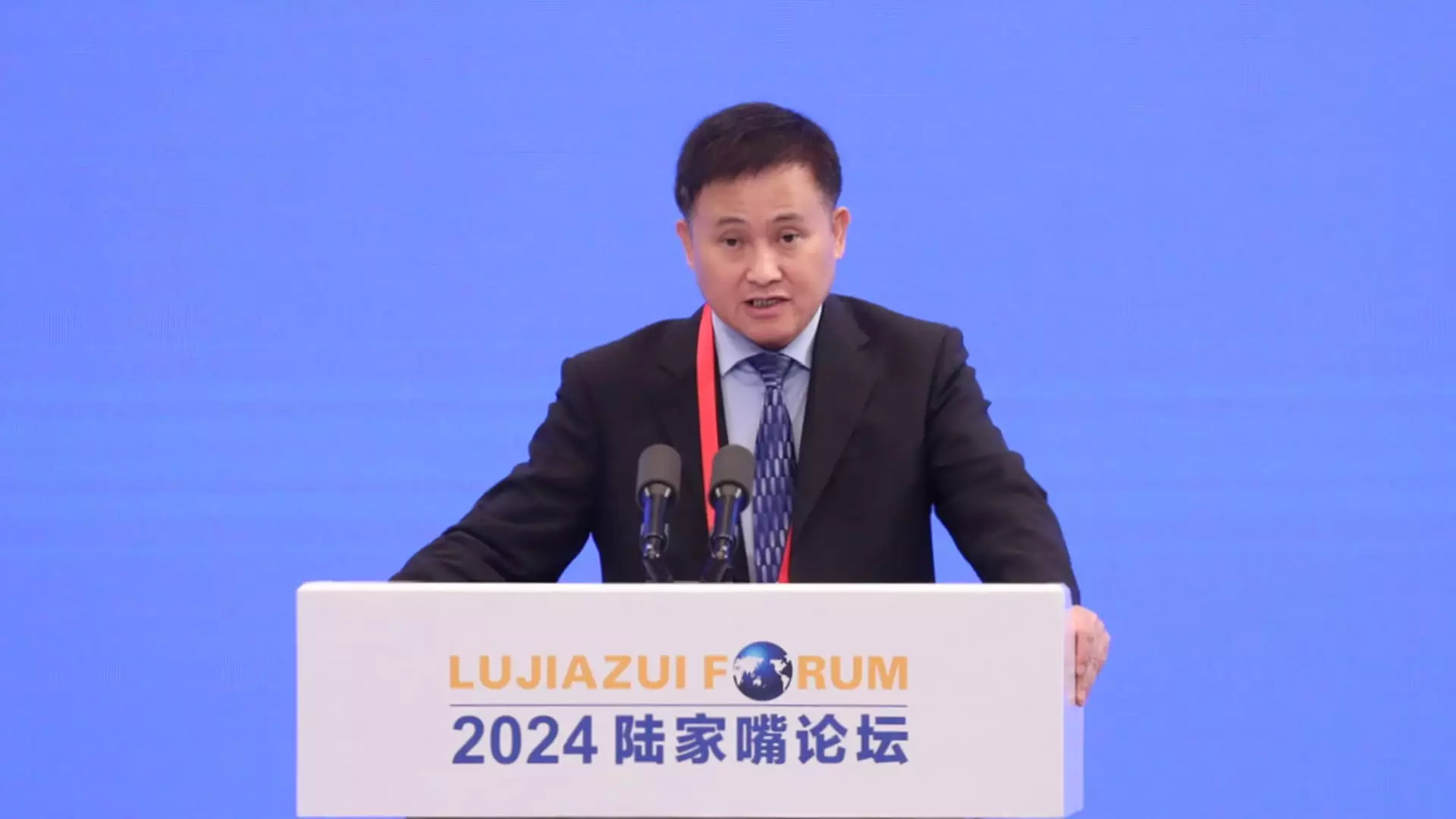China’s economy is grappling with significant hurdles, and the recent announcements from the People’s Bank of China (PBOC) reflect the urgency of the situation. The PBOC is set to reduce the reserve requirement ratio (RRR) by 50 basis points, a move intended to infuse liquidity into the economy and stimulate growth. This decision comes in the wake of the U.S. Federal Reserve’s own interest rate cuts, prompting analysts to speculate about how far China might go in adjusting its monetary policy.
The reserve requirement ratio is the percentage of deposits that banks must hold in reserve and not lend out. By lowering the RRR, the PBOC is attempting to encourage banks to lend more, thus increasing money supply and promoting consumer spending and business investment. Governor Pan Gongsheng’s remarks indicated that there might be further cuts to the RRR later this year, depending on economic conditions. This implies a proactive stance from the PBOC, aware of the challenges posed by a decelerating economy that has seen particularly adverse effects from a stagnant real estate market and diminishing consumer confidence.
The PBOC’s decision to also cut the 7-day repo rate by 0.2 percentage points may further signal a shift in monetary policy as the central bank attempts to maintain control over liquidity conditions. The repo rate is crucial as it determines the cost of borrowing for banks, which in turn influences interest rates for consumers and businesses. By effectively reducing borrowing costs, the PBOC aims to spur investment and spending, essential components of economic recovery in an environment characterized by deflationary pressures.
Economists have long pointed out the necessity for stimulus measures in China, given the slowing growth rates that have troubled the government for some time. The cautious optimism surrounding the PBOC’s actions reflects the need for a multi-faceted approach to economic management, where interest rate cuts accompany other financial strategies to stimulate growth.
The timing of these policy shifts is noteworthy, particularly following the U.S. Federal Reserve’s rate cut, which has opened a pathway for emerging economies like China to reconsider their own monetary policies. The interconnectedness of global financial markets means that China’s monetary strategies will likely be influenced by the actions of Western central banks. This is particularly vital as countries seek to navigate a landscape shaped by inflation concerns and economic uncertainty.
Governor Pan’s approach—balancing between easing monetary policy and remaining cautious regarding inflation—reveals an acute awareness of the complexities facing China’s financial infrastructure. By not specifying the timing of future interest rate adjustments, the PBOC exhibits a strategic flexibility that seeks to adapt to rapidly changing economic circumstances.
However, there are existing obstacles that the PBOC must address. The slow recovery in the real estate sector coupled with waning domestic demand poses significant risks to achieving the government’s growth targets. Policymakers must not only rely on monetary policy tools like the RRR and repo rate cuts but also explore fiscal measures that can provide a more substantial boost to the economy.
There are calls from economists for additional government spending to stimulate demand, focusing on infrastructure and social spending, which could have a more immediate impact on growth. Enhancing consumer confidence through improved employment conditions and more robust social safety nets could also help mitigate the current stagnation.
China’s monetary policy landscape is shifting as the PBOC takes proactive measures to navigate an intricate economic environment. While the planned cuts to the reserve requirement ratio and interest rates demonstrate a commitment to boosting economic activity, they must be part of a broader strategy that includes fiscal stimulus and structural reforms. As China works to rebound from the economic challenges it faces, the central bank’s adaptability and foresight will play critical roles in determining the course of the nation’s economic recovery.

